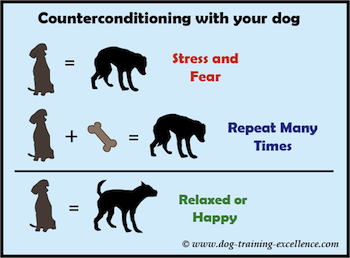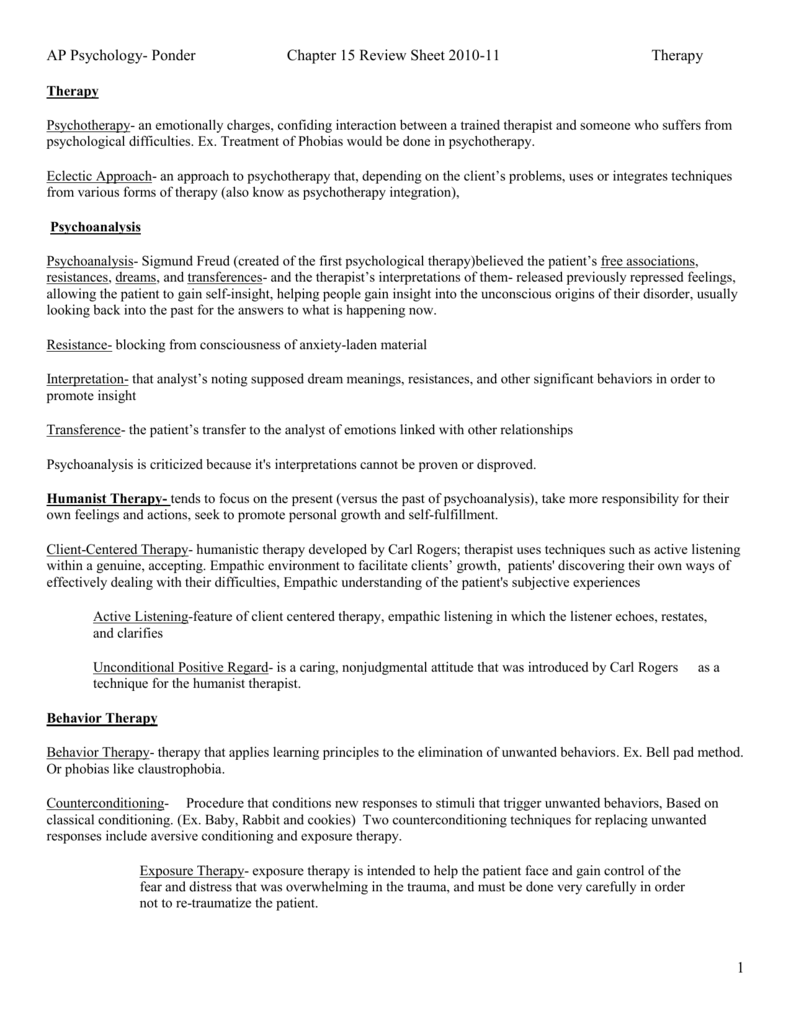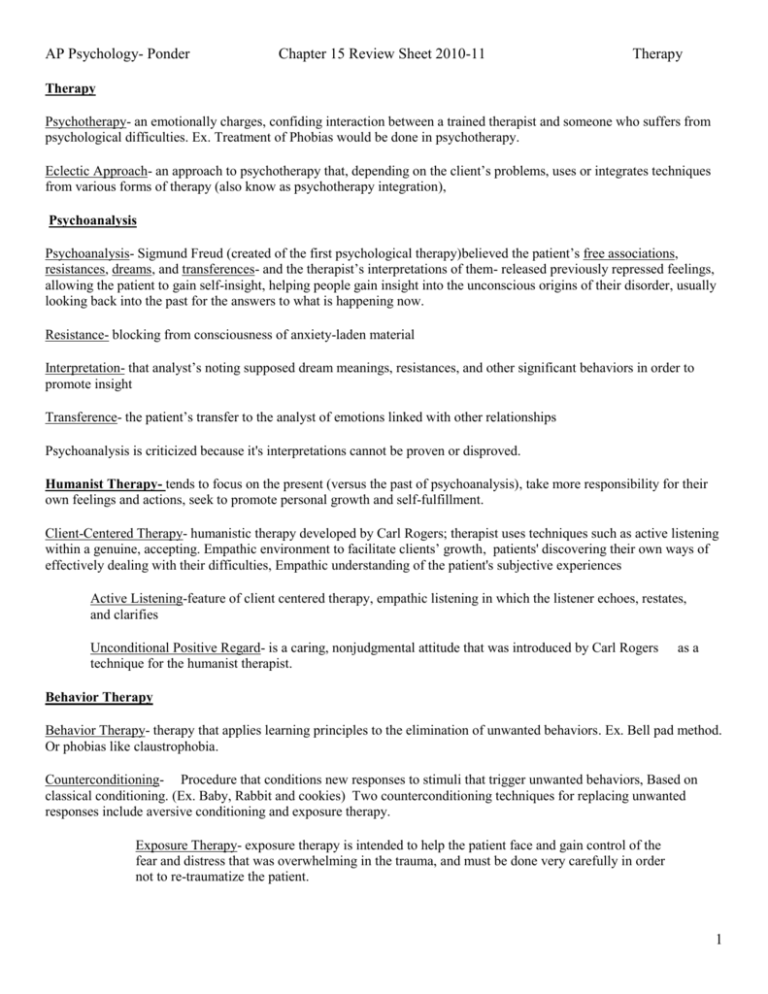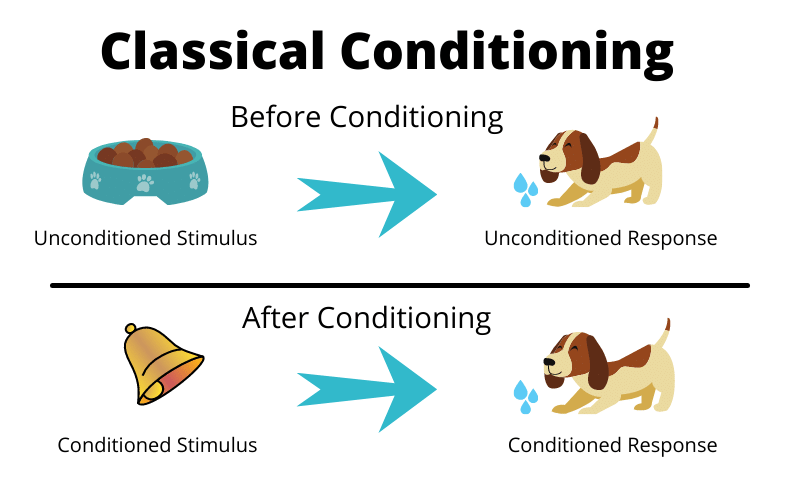C unconditional positive regard and transference. The treatment of serious psychological disorders with prescribed medications or medical procedures that directly influence the nervous system is called.

Counter Conditioning Definition Examples Video Lesson Transcript Study Com
Spontaneous recovery and stress inoculation training.

. A procedure that trains people to make new responses to stimuli that currently trigger unwanted responses is called. Two counterconditioning techniques for replacing unwanted responses are A. D aversive conditioning and exposure therapy.
Spontaneous recovery and stress inocculation training C. Building an behavior is operant conditioning. Unconditional positive regard and transference D.
2 spontaneous recovery and stress inoculation training. Two counterconditioning techniques for replacing unwanted responses are Aversive conditioning and exposure therapy Sluggishness tremors and twiches similar to those of Parkinsons disease are most likely to be associated with excessive use of certain --- drugs. Systematic desensitation and free association B.
Systematic desensitization and free association. Two counterconditioning techniques for replacing unwanted responses are aversive conditioning and exposure therapy. Aversive conditioning and exposure therapy.
Two counterconditioning techniques for replacing unwanted responses are a systematic desentization and free association b spontaneous recovery and stress inoculation training c unconditional positive regard and transference d aversive conditioning and exposure therapy. C unconditional positive regard and transference. Unconditional positive regard and transference.
Unconditional positive regard and transference. C 48Two counterconditioning techniques for replacing unwanted responses are A systematic desensitization and free association. Systematic desensitization and free association.
Two counterconditioning techniques for replacing unwanted responses are A systematic desensitization and free association. Spontaneous recovery and stress inoculation training. 4 aversive conditioning and exposure therapy.
Obviously behavior affects emotion and emotion affects. Building a new emotional association to replace an unwanted emotional association is classical counterconditioning. If you can make the animal feel comfortable or good when they interact with the stimulus then they will be less and less likely to elicit the unwanted response.
Two counterconditioning techniques for replacing unwanted responses include a. Spontaneous recovery and stress inoculation training. A procedure that trains people to make new responses to stimuli that currently trigger unwanted responses is called.
Two counterconditioning techniques for replacing unwanted responses are aversive conditioning and exposure therapy. Through counter conditioning you change the way the animal feels about the stimulus. Aversive conditioning and exposure therapy.
Aversive conditioning and exposure therapy. Two counterconditioning techniques for replacing unwanted responses are. Unconditional positive regard and transference.
Bennys mother tries to reduce his fear of sailing by giving the 3-year-old his favorite candy as soon as they board the boat. 3 unconditional positive regard and transference. Two counterconditioning techniques for replacing unwanted responses are A systematic desensitization and free association.
Two counterconditioning techniques for replacing unwanted responses include a. Two counterconditioning techniques for replacing unwanted responses include a. B interpersonal psychotherapy and.
C unconditional positive regard and transference. Aversive conditioning and exposure therapy. Systematic desensitization and free association.
1 systematic desensitization and free association. A systematic desensitization and free association. Two counterconditioning techniques for replacing unwanted responses include.
Token economy and meta-analysis. Token economy and meta-analysis. Instead the response will be replaced by something more pleasant.
Token economy and meta-analysis. Aversive conditioning and exposure therapy. Two counterconditioning techniques for replacing unwanted responses include.
Token economy and meta-analysis. Two counterconditioning techniques for replacing unwanted responses include a. B interpersonal psychotherapy and stress inoculation training.
Two counterconditioning techniques for replacing unwanted responses are A systematic desensitization and free association. Building a new behavior to replace an unwanted behavior is operant counterconditioning. B interpersonal psychotherapy and stress inoculation training.
Aversive conditioning and exposure therapy. Unconditional positive regard and transference. B spontaneous recovery and stress inoculation training.
D aversive conditioning and exposure therapy. C unconditional positive regard and transference. Building an emotional association is classical conditioning.
Counterconditioning can happen through systematic desensitization aversion therapy response substitution fear conditioning and aversive counterconditioning. Systematic desensitization and free association. B interpersonal psychotherapy and stress inoculation training.
Two counterconditioning techniques for replacing unwanted responses are. Aversive conditioning and exposure therapy. Examples of Counter Conditioning.
Spontaneous recovery and stress inoculation training.

Operant Counterconditioning Mills Horsemanship Hoofcare

What Is Counterconditioning And How To Use It

What Is Counterconditioning What Does Counterconditioning Mean Youtube

Play And Behavior Therapy Introduction To Psychology

Behavioral And Neural Processes In Counterconditioning Past And Future Directions Sciencedirect



0 comments
Post a Comment